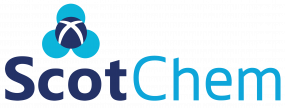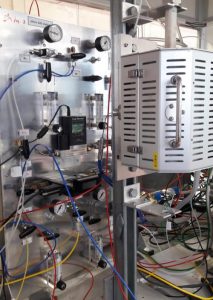Ingen GTL and the University of Aberdeen collaborated to create an improved catalyst. The iron catalyst reduces the energy needed for the high-temperature hydrogenation of carbon dioxide, an important industrial process. Thus, any improvement in its efficiency offers an opportunity to profit.
Ingen GTL Ltd contacted the Surface Chemistry and Catalysis Group. The new catalyst required detailed characterisation, optimisation, and scale-up. A Kick Start Award, from Encompass, funded a collaboration with Prof James Anderson.
Varying the catalyst synthesis led to a new version with greatly improved performance. We optimised the catalyst by screening promotor compositions and active metal formulations. We varied the catalyst composition to measure the effect of performance. Finally, we demonstrated that the catalyst can convert a wide range of syngas compositions. This includes syngases produced from both methane and biomass. Other commercial catalysts need feedstocks with controlled composition. Thus, our catalyst has a strong advantage.
As a result of this project, Ingen GTL has expanded its patent portfolio and is now commercialising the technology.
For Richard Hyman, iGTL’s CEO, collaboration with the University of Aberdeen was very important since it allowed their catalyst to undergo a broad a range of test variations, with full access to a reactor and with dedicated personnel . It was also crucial to be able to establish a pathway for improving the catalyst.
The improved catalyst is the foundation of iGTL’s core product, the syngas conversion reactor. The success of the project opens the way for future collaborations between both parties.
Ingen and the University of Aberdeen
Benefits
- Improved product with improved catalyst
- Advantage over competitors
- An ongoing relationship with Chemistry at Aberdeen
- New avenues for product development
Funding
The University of Aberdeen and Ingen are grateful to Encompass for support and funding.












